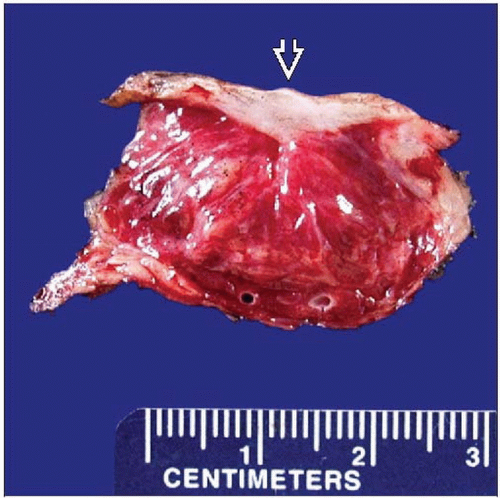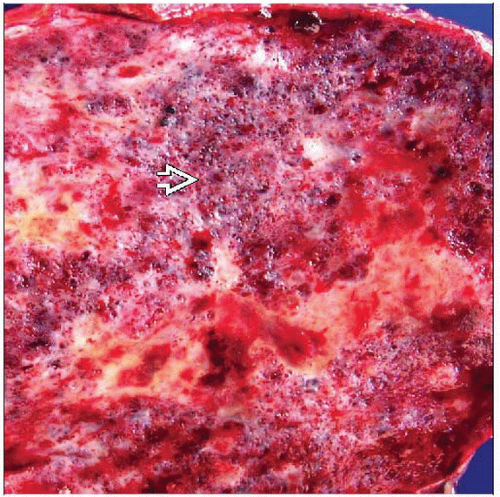Capillary, Venous, and Cavernous Hemangiomas
Amitabh Srivastava, MD
Key Facts
Terminology
Benign vascular tumors composed of blood vessels lined by plump to flattened endothelial cells with no atypia
Etiology/Pathogenesis
May be congenital
Clinical Issues
Capillary and cavernous hemangiomas in adults occur more commonly in women
Macroscopic Features
Capillary hemangioma is commonest subtype of hemangioma
Juvenile hemangioma occurs in infancy
Pyogenic granuloma occurs on skin and mucosal surfaces
Cavernous hemangiomas present as birthmarks
Venous hemangiomas are rare and present in adulthood
Microscopic Pathology
Nodules of small capillary sized vessels in lobular pattern in capillary hemangioma
Large, cystically dilated blood vessels filled with blood in cavernous hemangioma
Large, thick-walled veins in venous hemangioma
Lining endothelium in all lesions does not show atypia
Thrombosis, hemorrhage, and calcification may be present
TERMINOLOGY
Abbreviations
Pyogenic granuloma (PG)
Synonyms
Capillary hemangioma = lobular hemangioma
Definitions
Benign vascular tumors composed of blood vessels of various size lined by plump to flattened endothelial cells with no atypia
ETIOLOGY/PATHOGENESIS
Developmental Anomaly
Juvenile capillary hemangiomas may be congenital
Venous hemangiomas may represent vascular malformations
CLINICAL ISSUES
Epidemiology
Age
Depends on subtype
Gender
Capillary and cavernous hemangiomas in adults occur more commonly in women
Site
Depends on subtype
Presentation
Painless mass
Red elevated papule(s)
Natural History
Juvenile capillary hemangiomas regress spontaneously with time
Treatment
Surgical approaches
Surgical excision is curative
Drugs
Glucocorticoids or interferon-α therapy for large or symptomatic juvenile hemangiomas
Watchful waiting for juvenile hemangiomas that regress with time
Prognosis
Recurrences are rare; occur in incompletely excised lesion
MACROSCOPIC FEATURES
General Features
Elevated nodular red-purple lesions
Usually involve skin or subcutaneous tissue
Discoloration may not be obvious in deep-seated lesions
Recurrences may be sessile
Size
Variable size
Capillary (Lobular) Hemangioma
Most common type of hemangioma
Variants
Juvenile hemangioma
Occurs in infancy; 1:200 births
About 1/5 multiple; rarely familial
Flat red lesion in early stage
Pyogenic granuloma (PG)
Occurs on skin and mucosal surfaces
Gingiva, fingers, lips, face, and tongue are most common sites of involvement
Stay updated, free articles. Join our Telegram channel

Full access? Get Clinical Tree






